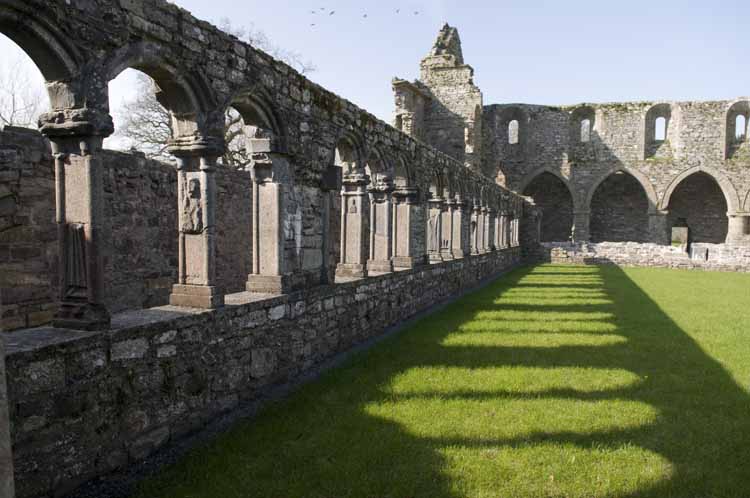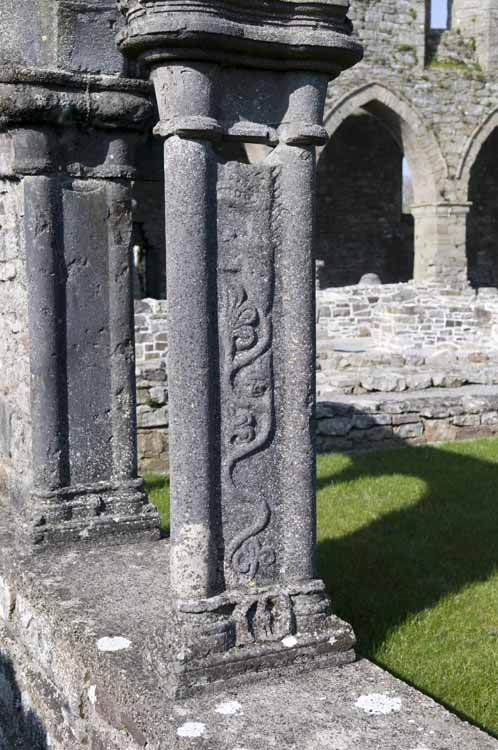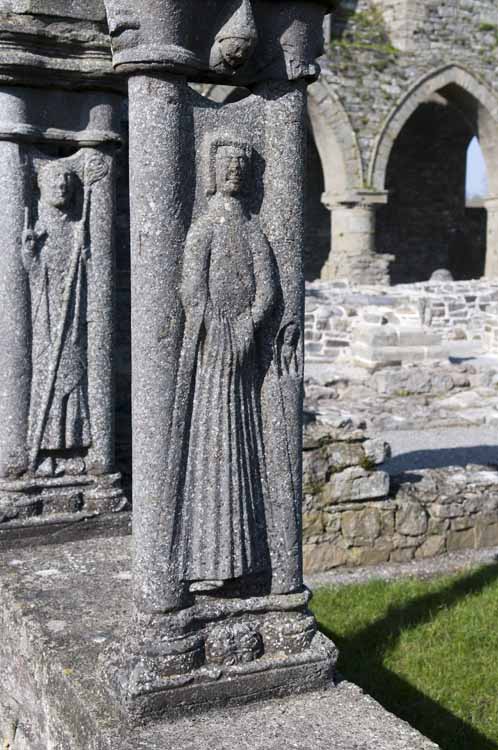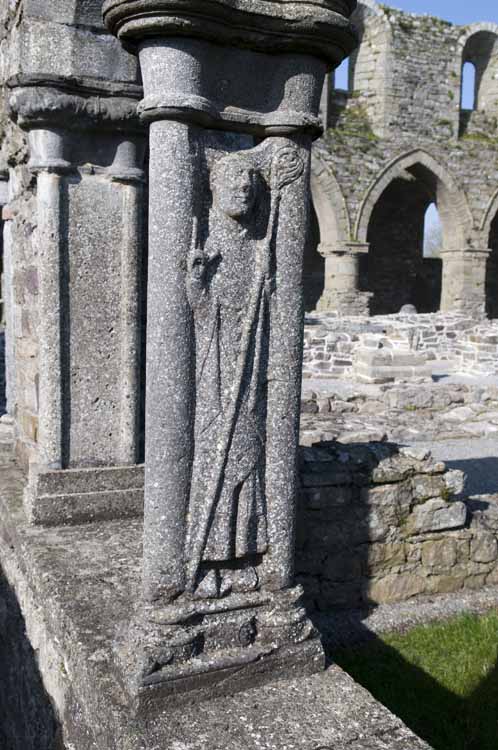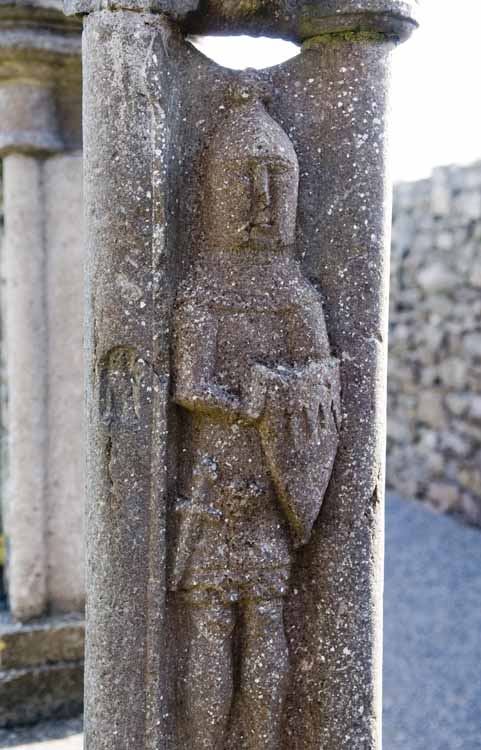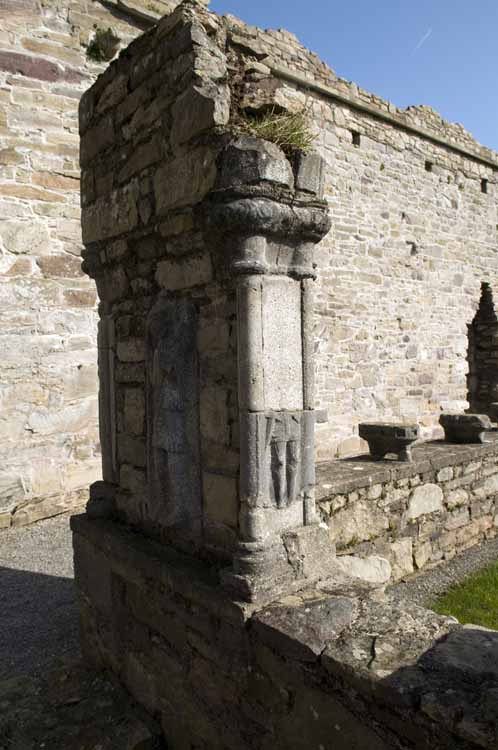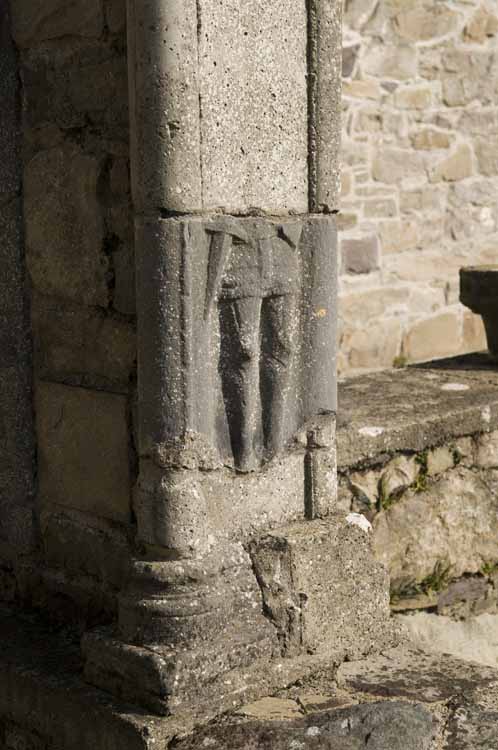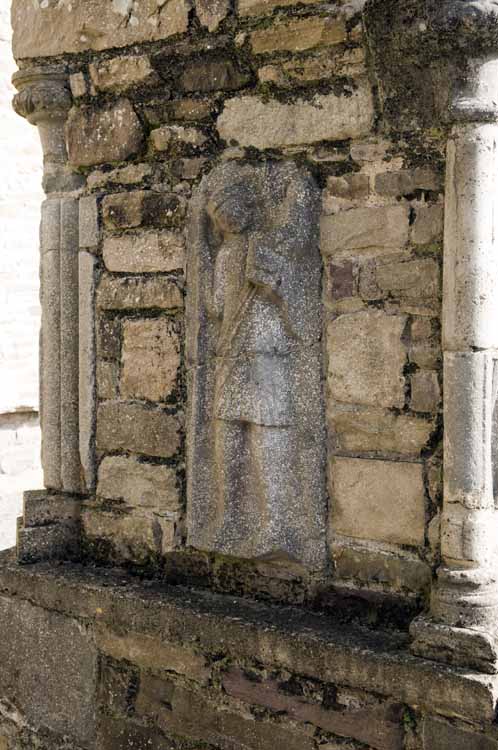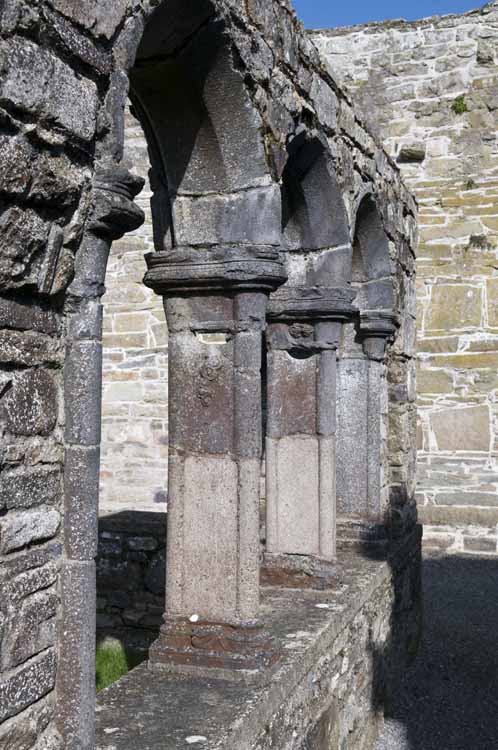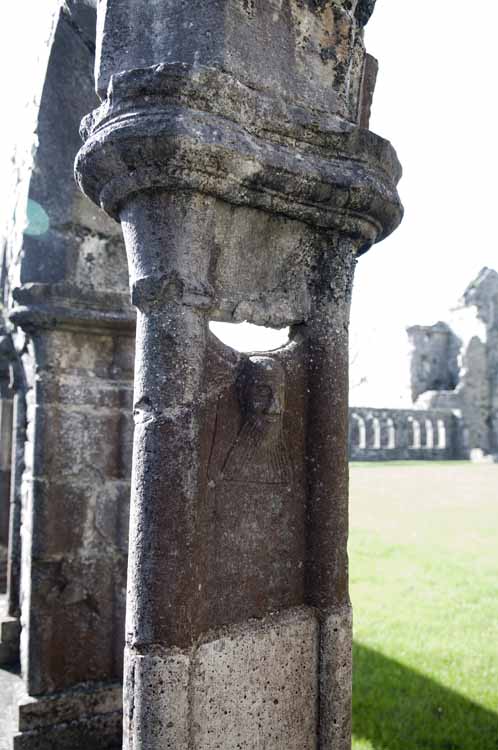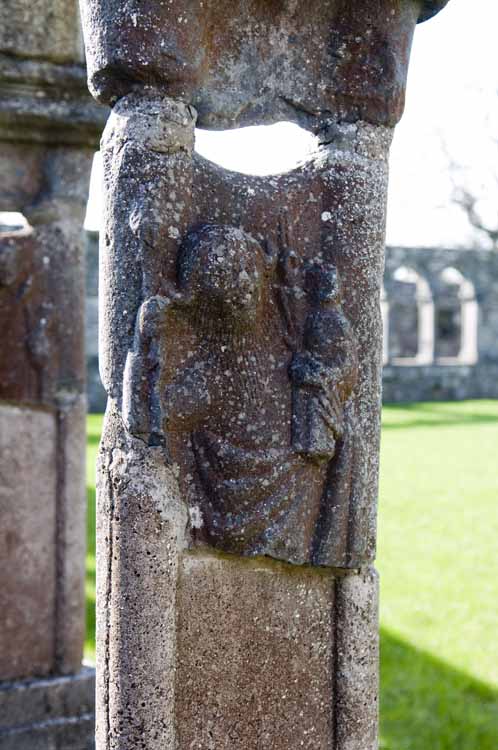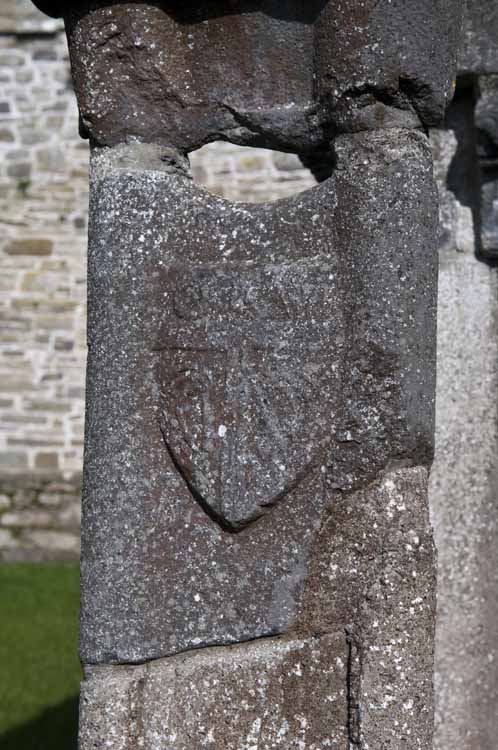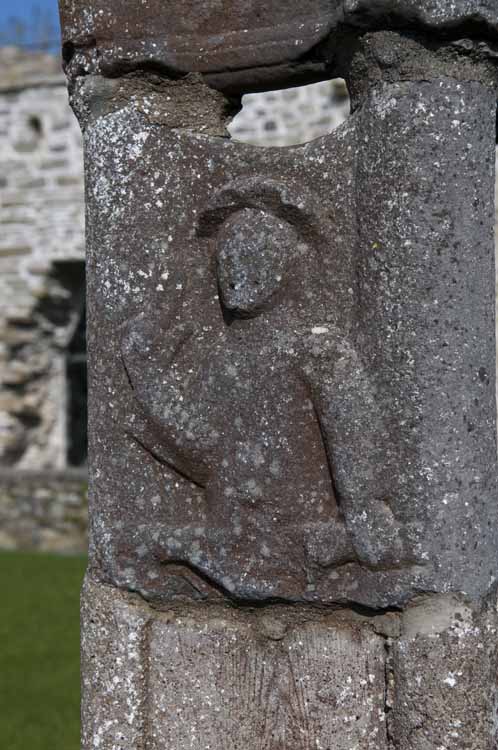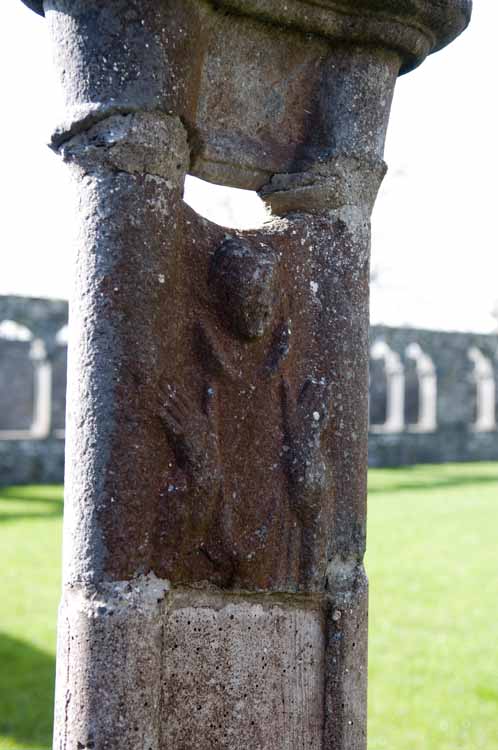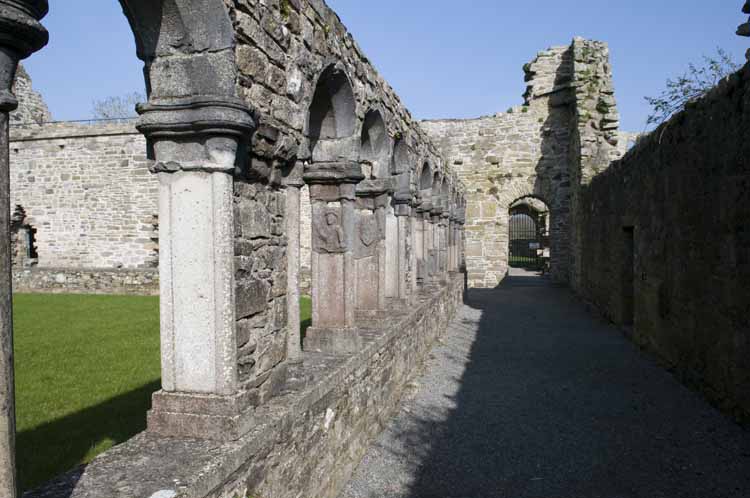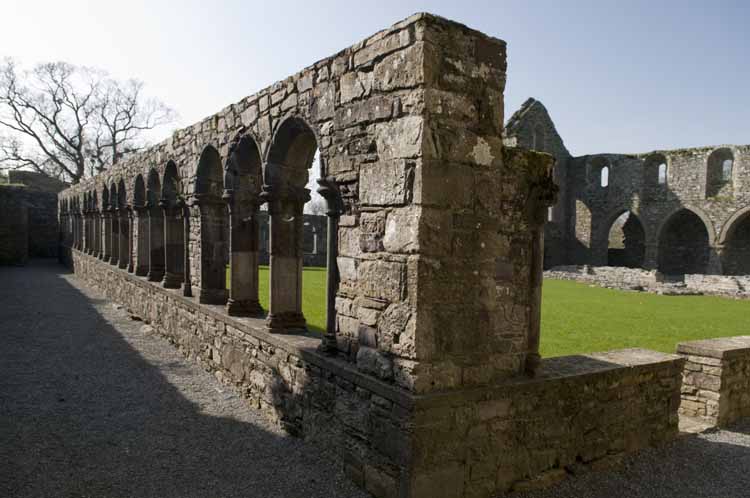 The cloister garth at Jerpoint Abbey measures about 98 feet from east to
west, 95 from north to south. By the end of the Middle Ages there was
apparently a cloister arcade bearing a simple lean-to roof on all four
sides, the supports consisting of groups of round-topped arches carried on
coupled colonnades. Between the groups of arches were rectangular piers
which projected into the garth like shallow buttresses for a distance of
probably only a few inches. This projection has not been carried out in the
recent reconstruction of the west and south arcades. The cloister garth at Jerpoint Abbey measures about 98 feet from east to
west, 95 from north to south. By the end of the Middle Ages there was
apparently a cloister arcade bearing a simple lean-to roof on all four
sides, the supports consisting of groups of round-topped arches carried on
coupled colonnades. Between the groups of arches were rectangular piers
which projected into the garth like shallow buttresses for a distance of
probably only a few inches. This projection has not been carried out in the
recent reconstruction of the west and south arcades.
The corners of the garth were apparently marked by L-shaped piers. Most of the arches here are composed of three pieces of stone, which run through the whole thickness of the wall (PL 2). On the side which is now toward the walk, probably in accordance with the original disposition, there is but a plain chamfer, whereas on the side toward the garth is what amounts to a filleted round in a concave chamfer. Enough pieces of stone to form two or three arches exhibit a finer, more complete moulding. The slenderer colonnades are left in about the same proportion. It could be suggested that part of the cloister may have been built at a different, probably slightly earlier time than the remainder. Ten of the arches carry carved details in addition to their mouldings, and these grace notes range from a single sycamore or ivy leaf to a wreathed face. They appear to have been added as the impulse occurred, and may be found on the side of the arch toward the garth, on the soffit, or on the chamfer toward the walk. Most immediately arresting of all the sculptures of the cloister, however, are the carvings on the plates between the colonnades. A recent count indicated that fifty-one instances still exist, though some are represented by only a small fragment. And the range from a solitary little billet a few inches long to a shield with symbols of the Passion, to full-length human figures. Of possible significance for the date of the cloister are a donation made by the second Earl of Ormond in 1364 and additional gifts made before 1400.48 But it was during the time of James Butler, fourth Earl of Ormond (1405-1452) and the abbacy of David Mortymer, which extended from at least about 1431 to 1456, that Jerpoint appears to have enjoyed especially good fortune. The Earl had been renting certain lands to the abbey for several years and finally gave them outright in 1449. In 1445-1446 one Richard Walshe also bestowed lands upon Jerpoint. Source: Rae, E. 1966. The Sculpture of the Cloister of Jerpoint Abbey. The Journal of the Royal Society of Antiquaries of Ireland, 59-91 | ||
|
West side of the Cloister and its central garth. The inner surfaces of the cloister arches have carved images of mythical beasts, a knight, abbot and other people. Jerpoint Abbey, County Kilkenny. 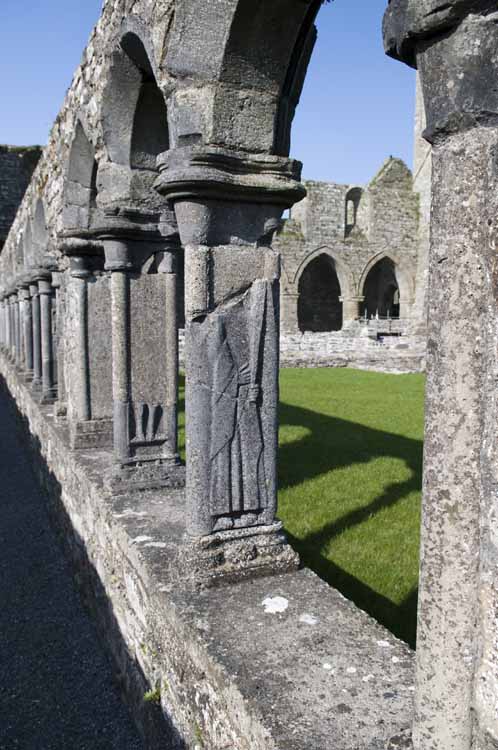
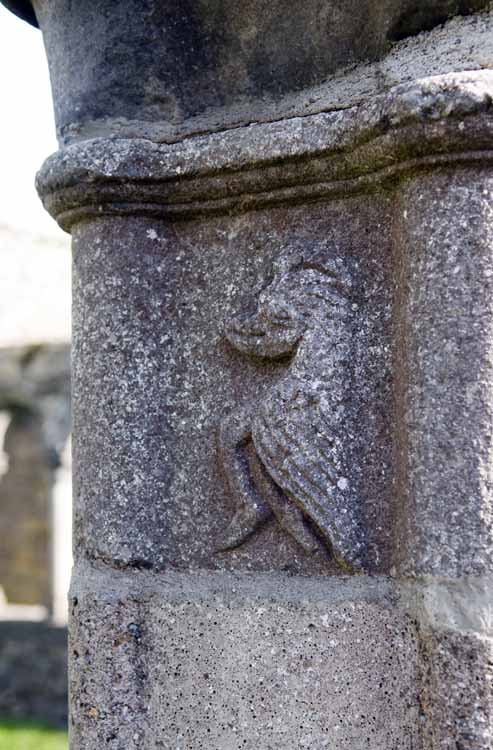
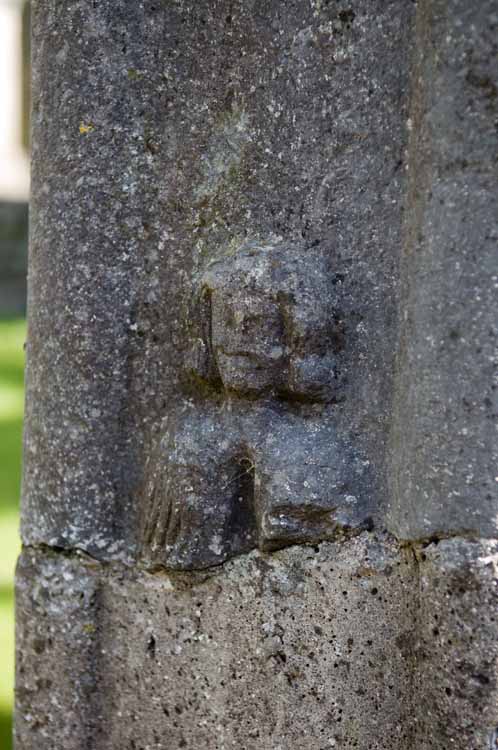
| ||
|
North side of the Cloister 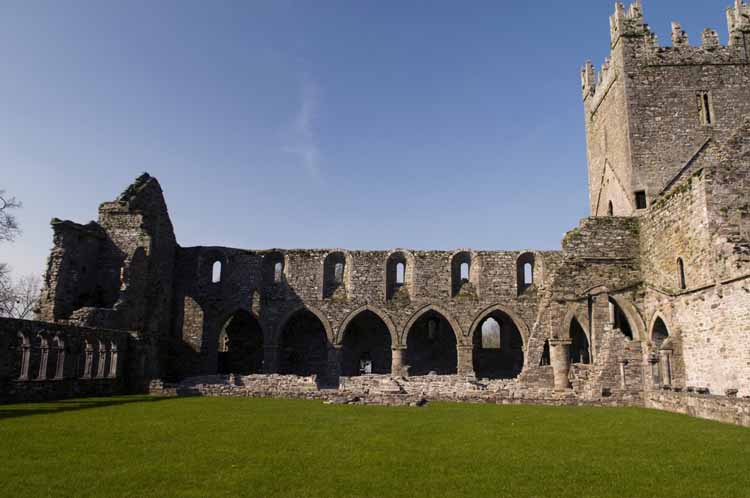
| ||
|
South side of the cloister which have carved internal surfaces 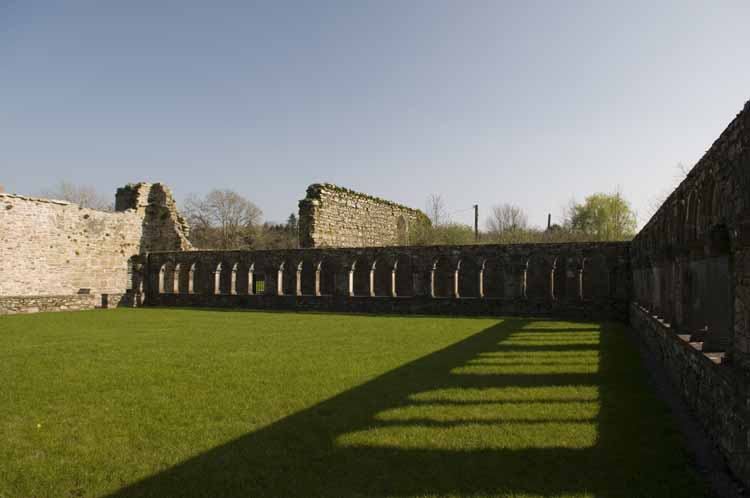
| ||
|
East side of Cloister 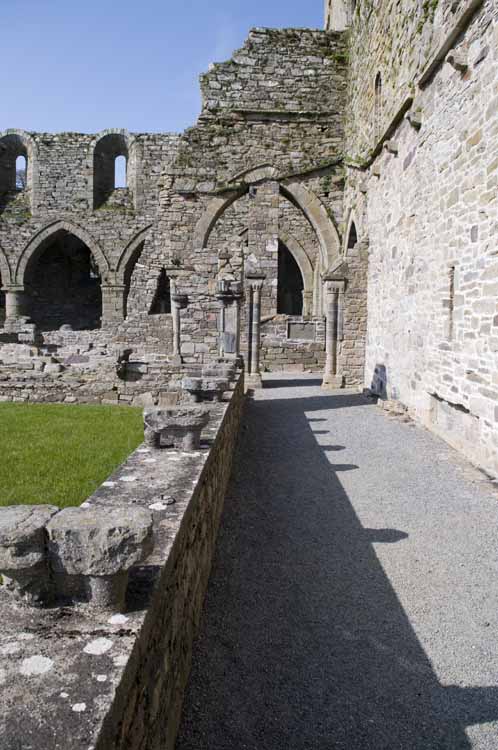
| ||
Contact & Feedback : Cistercian Archaeology through Images : Page last updated on 26-July-2014 :
